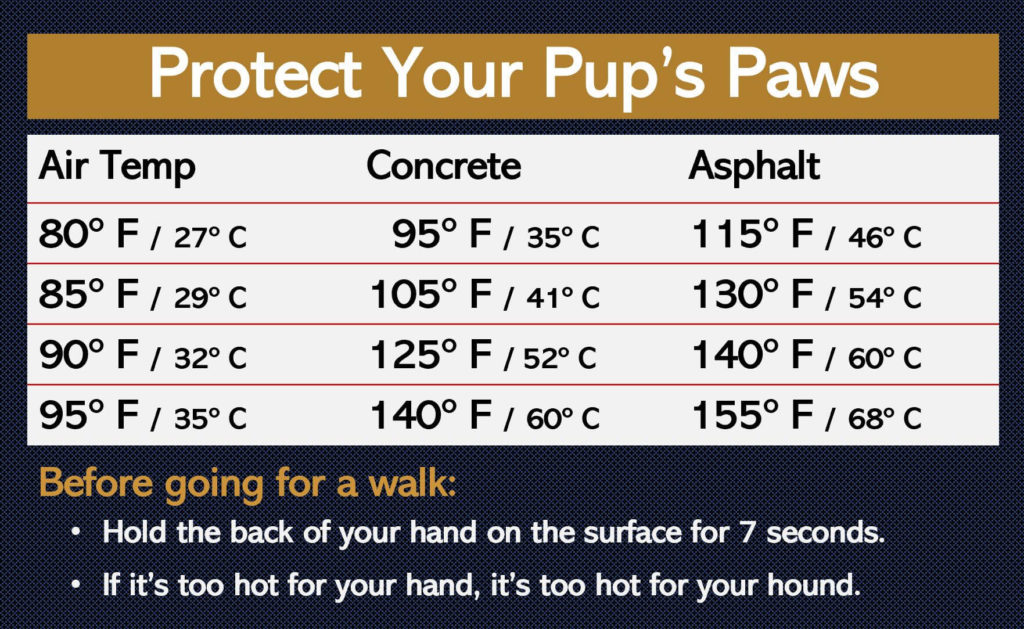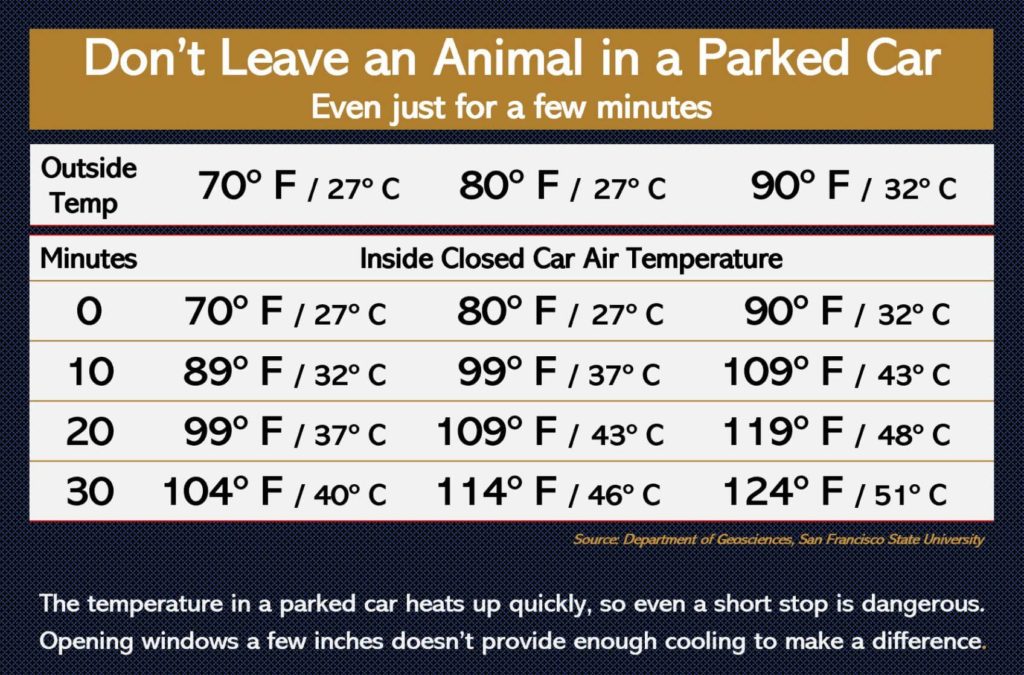
Summertime! What a wonderful time of year: the days are longer, and there are festivals, outdoor cafes and farmers markets to explore. Summer can also bring oppressively hot temperatures and air that drips with humidity. On those days I just want to stay inside in the air conditioning. Unfortunately that’s not always possible. Dogs needs to be walked, and errands need to be run. Otherwise, I might not have food to eat when I’m hungry later in the day. And a mess of doggy-doo to clean up.
In addition to making us feel uncomfortable, soaring temperatures can also lead to overheating and heat stroke, both of which are serious health threats to you and your pets. Even with prompt treatment heat stroke can be fatal. That’s why keeping your pets cool in hot weather is so important.
There are simple precautions you can take to help yourself and your furry friends get through a hot spell. Here’s what you need to know to keep your pets cool and safe.
If it’s hot outside, the best thing to do is to keep everyone indoors as much as possible, ideally in an air conditioned room. If you don’t have air conditioning, set up fans to create a cool breeze. According to Dr. Sarah Hoggan, medical director for VCA California Veterinary Specialists, you want to keep pets in areas that are 80° F / 27° C or cooler.
Open, unscreened windows pose a real danger to pets, who often fall out of them. Keep all unscreened windows or doors closed, and make sure adjustable screens are tightly secured.
Keep water bowls full and in cool places to maximize your pet’s ability to keep cool.
If you need to let them out to do their business, stay by the door, so you can let them in as soon as they’re ready.
All animals need access to shade combined with good ventilation when out in hot weather, including dogs who live in shelters outside, rabbits, horses, etc. “When the sun is beating down and baking those [animals’] shelters, the temperatures inside can get very hot very quickly,” according to Kathy Campbelli of the USDA’s Animal and Plant Health Inspection Service.
“Because [pets] regulate their temperature through evaporative or conductive cooling, they need to have air movement.” That’s why outdoor dogs will seek relief in the shade outside of their shelters. For animals like rabbits that are normally kept in cages, set up a small fan nearby to give them a cool breeze. You can also put a frozen water bottle in their cage or mist them with cool water to help them stay cool.
Check on your outdoor pets often. If you see your furry friend lounging in the shade, check that they’re not overheating and ensure they have sufficient cool water to drink.
Most dogs need to be walked, or at least let outside, multiple times a day. If you need to take Fido for a walk, time your outing for when it’s cooler. Early in the morning or late in the evening is best. It’s also a good idea to plan a shorter walk than usual, preferably one with plenty of shaded spots.
Don’t forget to pack plenty of water and a collapsible bowl, so you can keep Fido hydrated while you’re out. And take lots of breaks to enjoy shady spots in the grass. You’ll both feel better for it.
Before you head out on your walk, or when you come to a place that feels hotter than where you had just been, check the ground to see if it’s safe for your puppy’s paws.
Quick fact: Skin destruction can happen very quickly on hot surfaces. In fact, at 125° F / 52° C skin destruction begins within just 60 seconds. Yikes! As tough as your dog’s paw pads are, they aren’t indestructible. They can blister and be severely damaged when exposed to environmental extremes like super hot pavement.
Think you’ve never walked on a 125° F / 52° C surface? Think again. Surfaces like concrete and asphalt heat up quickly in hot weather and stay hot until well after the sun goes down in the evening. We’ve all walked on ground that hot, many times (unless, of course, you’re an Eskimo).

How hot is too hot for a dog’s sensitive paw pads? “If the [air] temperature is 85 degrees or over without the chance for the pavement to cool down, the ground may be too hot for safely walking a dog,” says Jerry Klein, DVM, AKC’s Chief Veterinary Officer and an expert in veterinary emergency and critical care.
An easy way to check if the ground is safe for your hound is to put your bare hand or foot on the ground. If it’s too hot for you to hold it there for at least 7 seconds, it’s too hot for your dog’s paws. This quick safety trick works on all types of terrain, including sand, metal, asphalt, dirt and concrete.
If you must take your dog out during hot weather, choose grassy or shady areas. Grass doesn’t heat up nearly as much as other surfaces.
If it’s too hot for your bare feet, it’s too hot for your dog.
“In addition to damaged paws, hot pavement can also increase a dog’s body temperature and contribute to the development of heatstroke,” says the AKC’s Klein.
Most vets will advise you to leave your pooch at home if you need to run errands during hot weather. When they jump out of the car at each of your destinations, there’s a good chance their first few steps will be on hot asphalt, and that can easily damage their sensitive paws.
Leaving them in the car isn’t any better. In fact, leaving an animal in a parked vehicle, even for just a few minutes with the engine running and the air conditioning on, can lead to overheating and even death. That’s why it’s illegal to do so in many states.
The temperature in a parked car can reach 120 degrees within minutes, so just a 10-minute stop may be dangerous.

Opening the windows a few inches doesn’t provide adequate cooling. Leaving a pet in a car with the air conditioner running isn’t safe either, since an engine stall would quickly create unsafe conditions. If you need to run errands, or want to run to the farmers market, do your dog a favor and leave them home.
If you’re traveling with a pet, make frequent pit stops at places where your pet can get out of the vehicle. Ensure your pet has access to fresh, cool drinking water, including inside your vehicle when you’re traveling.
Small and short-legged pets are particularly susceptible to overheating as their bodies are closer to the hot ground. Flat-faced breeds, like Pugs and Persian cats, heat up faster, too, because they can’t pant as effectively as other breeds. And pets with thick coats, like huskies, shelties, and Siberian cats are also at higher risk of overheating.
These pets, along with the young, elderly, overweight, and those with heart or lung diseases, should be kept cool in air-conditioned rooms as much as possible during hot weather.
Everybody needs to be careful in hot weather, especially those of us who pad around on four paws and cannot say directly what we’re feeling. Being aware of the risk factors and watching for signs of overheating will go a long way to keeping your pets cool in hot weather.
Hot and muggy or just hot weather means more water. Be it in a bowl for them to drink, or some for them to splash through. If your pets need to be outside, keep an eye on how hot the ground they’re walking on is, and make sure they have plenty of well-ventilated shade and water. And hot humid days are a great time to cut back on exercising them.
The bottom line: if you feel hot and icky, your pet does too. Give both of you a break by staying in a cool, well ventilated place as much as possible during the hottest part of the day. You’ll both feel better for it.
Leave a Reply